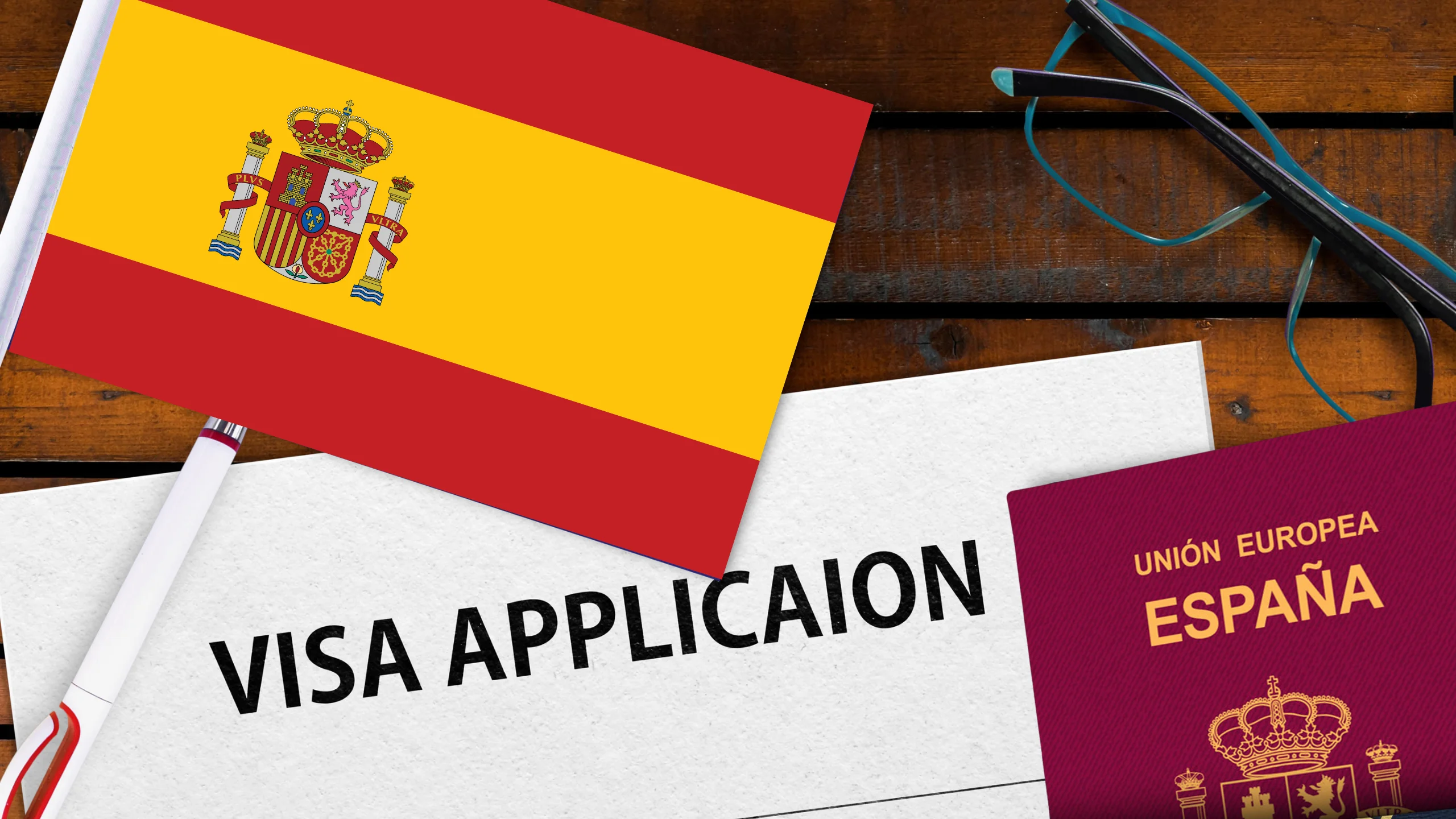Planning a trip to beautiful Spain while living in Dubai sounds exciting, right? But I know the visa process can feel like a puzzle, especially if it’s your first time dealing with embassy appointments, paperwork, and rules. Don’t worry, my friend. I’ve helped friends and travelers through this process before, and I’m going to break it down for you step by step, in simple words you can actually understand.
This guide is for anyone living in Dubai who’s dreaming of a Spanish getaway, whether it’s to see the Sagrada Familia, explore Madrid, or just enjoy a European escape. Let’s make sure you’re fully prepared and confident about what to do next.
How to apply for a Spanish visa from Dubai
If you live in Dubai and hold a valid UAE residence visa, you can apply for a Spain short-stay Schengen visa through the BLS Spain Visa Application Center.
The process includes booking an appointment, submitting your documents, and attending a short biometric session.
That’s it, just a few steps to start your Spain adventure.
Who Can Apply for a Spain Visa in Dubai?
Before you even think about booking your flight to Barcelona or snapping that perfect Instagram pic in Seville, you need to know if you’re actually eligible to apply for a Spain visa from Dubai. This part trips up a lot of people, especially expats living here on different types of visas.
Let’s clear it up.
✔ You must have a valid UAE residence visa
This is the #1 requirement. You can’t apply for a Spain visa from Dubai if you’re just here on a visit visa. Your UAE residency permit should be valid for at least 3 months after your planned return from Spain.
✔ Your nationality requires a Schengen visa
If you’re a citizen of India, Pakistan, the Philippines, Egypt, or any other country that’s not visa-exempt for the Schengen Area, then yes, you need a visa to enter Spain.
Quick tip: Even if you’ve visited the Schengen zone before, you still need a new visa for this trip unless you have a valid multiple-entry Schengen visa.
✔ Apply only if Spain is your main destination
If you’re touring several countries in Europe, the general rule is: apply at the embassy of the country where you’ll spend the most nights. If your stay is equal across countries, apply to the country you’ll enter first.
So if you’re flying into Spain first, or staying there longer than in other countries, you’re on the right track.
A good friend of mine from Pakistan was working in Dubai and wanted to do a Euro trip. He planned 3 days in Italy, 2 in France, and 5 in Spain. At first, he thought he should apply at the Italian consulate since he was landing there. But since he was spending the most time in Spain, he had to apply through the Spanish embassy via BLS. He almost booked the wrong appointment! This little misunderstanding could’ve cost him weeks, but luckily, he asked around.
If you’re legally living in Dubai with a valid residence visa, and Spain is your primary European stop, you’re 100% eligible to apply right from the UAE.
What Type of Visa Do You Need?
When you plan a trip from Dubai to Spain, the first thing to decide is which visa fits your trip. The most common choice is the short‑stay Schengen visa, commonly called a tourist or business visa, but there are other pathways if your stay is longer or your purpose is different. I’ll walk you through the main visa categories and help you pick the right one.
Short‑Stay (Schengen) Visa, up to 90 days
The short‑stay Schengen visa is what most visitors need when they want to spend up to 90 days in the Schengen area for tourism, business meetings, or family visits. It’s issued under the Schengen rules, so a visa for Spain allows travel to other Schengen countries during the validity period, provided entry rules are met. You apply through the BLS Spain Visa Center in the UAE when Spain is your main destination, or through the relevant embassy if rules require it. This visa requires proof of travel insurance, a return flight reservation, and evidence of sufficient funds for your stay.
Long‑Stay (National) Visas, over 90 days
If you plan to stay in Spain for more than 90 days, to work, study, join a family, or live, you need a national visa rather than the Schengen short‑stay permit. National visas are handled by the Embassy of Spain and later require local registration and permits inside Spain. The documents and processing differ a lot from the short‑stay application: you’ll need official acceptance letters, work contracts, or family reunion paperwork, depending on the visa subtype. Processing also takes longer and often requires additional background checks.
Transit and Airport Transit Visas
If you are only passing through a Schengen airport on your way to a non‑Schengen country, you might need a transit visa. Most travellers from the UAE holding a valid residence permit in the UAE don’t need a separate transit visa when staying airside, but requirements change by nationality and itinerary. Check the specifics before booking a connecting flight.
Business vs Tourist within the Short‑Stay Category
Within the Schengen short‑stay classification, there is a practical split between tourist and business purposes. A tourist visa supports holiday travel and sightseeing. A business visa is for attending conferences, meetings, or corporate training. The paperwork differs mainly in the supporting documents: invitations or company letters are essential for business visits, while confirmed hotel bookings and an itinerary are more important for tourism.
Which embassy or centre should you use?
If Spain is your main destination, the correct place to lodge your application is through the Spanish channel in the UAE, typically the BLS Spain Visa Center acting on behalf of the Embassy of Spain. In practice, that means booking an appointment with uae.blsspainvisa.com and submitting your file there. If Spain is not your main destination, you should apply through the embassy of the country where you will spend the most time, or where you enter first if stays are equal.
How to choose the right visa in practice
Start by being honest about trip length and purpose. If your stay is short and mostly for a holiday or meetings, go for the Schengen short‑stay visa. If you’ll study, work, or live in Spain longer than 90 days, begin the national visa process with the Spanish consular services. Always check the official guidance from exteriores.gob.es and consult the visa centre’s instructions before you gather documents. The right visa avoids wasted time and reduces the risk of refusal.
Choosing the correct visa is the foundation of a smooth application. Once you know the category, the rest, documents, appointments, and fees, fall into place. If you want, I can now draft the full documents checklist for the visa type you plan to apply for.
Required Documents Checklist
Getting your documents right is probably the most important part of your Spain visa application from Dubai. I’ve seen so many cases where applications were delayed, or even rejected, just because one paper was missing or not in the correct format. So let me walk you through exactly what you need, based on the latest guidelines from BLS Spain Visa Center and the Embassy of Spain.
Basic Personal Documents
- Passport (original + copy), must be valid for at least 3 months beyond your return date and have at least 2 blank pages
- UAE Residence Visa should be valid for at least 90 days from your intended return date
- Schengen Visa Application Form, filled, signed, and dated
- Two passport-size photos, taken within the last 6 months, with a white background
- Copy of Emirates ID
Travel Proof
- Confirmed round-trip flight reservation, not necessarily paid, but showing your intended entry and exit dates
- Hotel booking or accommodation details should cover the entire stay in Spain or the Schengen zone
- Travel itinerary, A basic day-by-day plan of your visit (can be a simple table or list)
Financial and Employment Documents
- Personal bank statements, Last 3 to 6 months, stamped by the bank
- Salary certificate, if employed in the UAE
- NOC from your employer, a Letter stating your role, salary, and leave approval
- Trade license copy, if you’re self-employed
- Proof of sufficient funds, Spain typically requires €100 per day of stay (or equivalent in AED)
Travel Insurance
- Travel medical insurance, Minimum coverage of €30,000 for emergency medical care and repatriation
- Must be valid in all Schengen countries for the full duration of your trip
Supporting Table – Visa Coverage Requirement
| Document Type | Requirement |
| Passport Validity | 3+ months after return |
| Bank Statement | 3–6 months, original, stamped |
| Insurance Coverage | €30,000 minimum |
| Daily Funds Required | €100 per day |
| Accommodation Proof | Full stay covered |
How to Apply for a Spain Visa from Dubai – Step-by-Step
Once your documents are ready, it’s time to actually start the application. From booking the appointment to submitting biometrics, each step needs to be followed carefully. I’ve broken it down into small, easy-to-follow tasks so you don’t feel overwhelmed.
Step 1 – Prepare and review your documents
Before you even go online to book your slot, double-check that every required document is ready, valid, and clearly printed. Make both originals and photocopies, especially for passports, bank statements, and your UAE residence visa. Organize them in the same order as requested by the visa center to save time during submission.
Step 2 – Book an appointment with the BLS Spain Visa Center
Visit the official BLS UAE website at uae.blsspainvisa.com and use their online system to book your visa application appointment. Choose a date and time that suits you. Once confirmed, you’ll get an appointment slip that you must bring on the day. Walk-ins are usually not accepted, so booking is mandatory.
Step 3 – Visit the BLS visa center in person
On your appointment day, head to the BLS Spain Visa Application Center at the scheduled time. Make sure to carry:
- Your complete document file (originals + copies)
- Your passport and UAE residence visa
- A printed copy of the appointment confirmation
Dress neatly and arrive at least 15 minutes early to avoid delays. Once inside, they’ll guide you through the counters where you’ll submit your application.
Step 4 – Submit your biometrics and pay the fees
As part of the Schengen visa process, you will need to give biometric data, fingerprints ,and a digital photo, unless you’ve submitted them in the last 59 months. Kids under 12 are usually exempt.
After submission, you’ll pay the visa fee and service charge. You can pay by card or cash, depending on the center’s policies.
Step 5 – Collect your receipt and track the application
Once you’re done, you’ll receive a submission receipt with a tracking number. You can use this to follow your application status online on the BLS site. Keep it safe, it’s required for passport collection later.
Spain Visa Fees from Dubai
When applying for a Spain visa from Dubai, there are two main types of payments you’ll need to be aware of: the visa application fee itself and the service fee charged by the visa application center. Even though the exact amount can vary slightly due to currency exchange and the services you choose, the structure stays the same for most applicants.
Visa Application Fee
The visa fee is set by the authorities and applies to most people over the age of 12. Children have a reduced rate, and kids under a certain age are generally exempt. These fees are mandatory and are collected at the visa application center when you submit your documents. It’s important to understand that the fee is non-refundable. This means that if your visa is refused, the payment is not returned. That’s why being fully prepared with accurate documents is key.
You should also ensure that the visa you’re applying for matches your purpose of travel, whether it’s for tourism, business, or visiting family, so that you don’t face delays or complications during processing.
BLS Service Fee
In Dubai, applications for Spain visas are handled by the BLS Spain Visa Center, and they charge a service fee in addition to the visa fee. This service charge covers their handling of your appointment, initial screening of documents, biometric data collection, and support during submission.
There are also optional services offered by BLS, like photocopying, form-filling help, courier delivery, or lounge access. These extras are completely optional and meant for convenience. You can choose what fits your comfort level, especially if you want a smoother or more private submission experience.
Payment Process and Tips
All payments are made at the visa center during your appointment. While some centers accept card payments, it’s a good idea to carry cash as well, just in case. Once you’ve paid, you’ll receive an official receipt which you should keep safe. It includes a reference number that’s useful for tracking your application status later on.
Once your fees are paid and your documents submitted, the application moves into processing. In the next section, I’ll walk you through how long it typically takes to receive your Spain visa, and what to expect while you wait.
Final Thoughts
Applying for a Spain visa from Dubai isn’t as complicated as it first seems, as long as you’re organized. Once you know which visa you need, gather your documents, and follow the steps calmly, the process becomes very manageable. I’ve helped friends do this smoothly, and you can too.
Give yourself enough time, double-check everything, and don’t leave things for the last minute. Spain is waiting, and if your paperwork is solid, your visa should be the least stressful part of your trip.
Ready to Explore Spain?
If you’re in Dubai and planning a trip to Spain, now’s the perfect time to start your visa process with confidence. Let The Open World be your go-to travel resource for helpful guides, real experiences, and expert visa tips, all tailored for UAE residents like you.
Visit the-open-world.com for more travel help, step-by-step visa guides, and destination tips made just for expats in the UAE.




